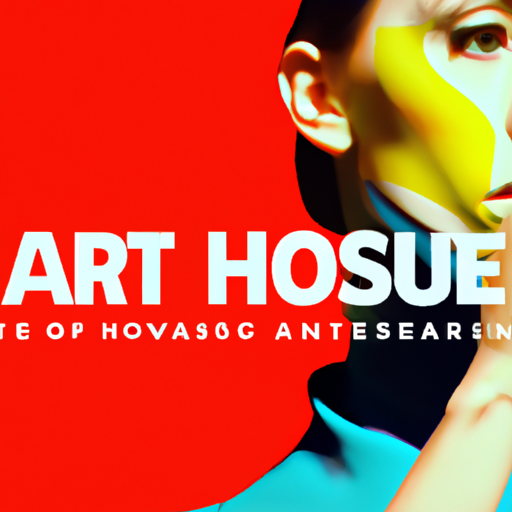
-
Table of Contents
Art House Cinema Posters: Creative Design Approaches

Art house cinema is a genre of film that is known for its unique storytelling, unconventional narratives, and thought-provoking themes. These films often challenge the traditional norms of mainstream cinema and cater to a niche audience who appreciate the artistic and intellectual aspects of filmmaking. One of the key elements that contribute to the overall experience of art house cinema is the design of its posters. In this article, we will explore the creative design approaches used in art house cinema posters and how they enhance the viewer’s perception of the film.
The Importance of Art House Cinema Posters
Posters play a crucial role in promoting films and attracting audiences. They serve as a visual representation of the film’s essence and are often the first point of contact between the audience and the film. For art house cinema, where the films are often lesser-known and have limited marketing budgets, the poster becomes even more critical in capturing the attention of potential viewers.
Art house cinema posters have the unique challenge of conveying the film’s unconventional nature and artistic qualities while still piquing the interest of the audience. Unlike mainstream cinema posters, which often rely on familiar faces and action-packed scenes, art house cinema posters need to communicate the film’s essence through more abstract and symbolic visuals.
Minimalism: Less is More
One of the most common design approaches used in art house cinema posters is minimalism. Minimalist posters rely on simplicity and abstraction to convey the film’s themes and mood. By stripping away unnecessary details, these posters create a sense of intrigue and allow the audience to interpret the film in their own way.
For example, the poster for the film “Moonlight” uses a minimalist approach to depict the film’s exploration of identity and sexuality. The poster features a single figure standing against a moonlit background, with minimal text and no additional visual elements. This minimalistic design captures the film’s introspective and intimate nature, inviting the audience to delve into the protagonist’s journey.
Typography: Expressing the Film’s Voice
Typography plays a crucial role in art house cinema posters, as it can convey the film’s voice and tone. The choice of fonts, lettering styles, and placement of text can evoke different emotions and set the mood for the film.
For instance, the poster for the film “Her” uses a unique typography approach to reflect the film’s futuristic and romantic themes. The title is written in a soft, flowing script font, which contrasts with the clean and modern sans-serif font used for the rest of the text. This combination of fonts creates a sense of intimacy and technological advancement, mirroring the film’s exploration of love in a digital age.
Symbolism: Visual Metaphors
Art house cinema often relies on symbolism and visual metaphors to convey its complex themes and ideas. Art house cinema posters embrace this approach by using symbolic imagery that hints at the film’s narrative or underlying messages.
For example, the poster for the film “Eternal Sunshine of the Spotless Mind” uses a combination of visual metaphors to represent the film’s exploration of memory and love. The poster features a fragmented image of the film’s protagonists, with puzzle pieces scattered around them. This imagery symbolizes the fragmented nature of memories and the puzzle-like process of piecing them together. The poster effectively captures the film’s themes and intrigues the audience with its enigmatic visuals.
Experimental Layouts: Breaking the Norms
Art house cinema posters often break away from the traditional layout conventions seen in mainstream cinema posters. They embrace experimental layouts that challenge the viewer’s expectations and create a sense of intrigue.
For instance, the poster for the film “Birdman” uses an unconventional layout to reflect the film’s unique narrative structure. The poster features a series of overlapping images, with the film’s protagonist in various poses and scenes. The chaotic layout mirrors the film’s exploration of identity and reality, creating a sense of disorientation and curiosity.
Case Study: The Criterion Collection
The Criterion Collection is a renowned home video distribution company that specializes in releasing classic and contemporary art house cinema films. The company is known for its meticulous curation and exceptional design approach to film packaging, including posters.
The Criterion Collection’s posters are often a work of art in themselves. They employ a variety of design approaches, including minimalism, typography, symbolism, and experimental layouts, to capture the essence of the films they represent. These posters have become highly sought after by collectors and enthusiasts, further emphasizing the impact of well-designed art house cinema posters.
Conclusion
Art house cinema posters are a vital component of the film’s marketing and play a significant role in attracting audiences. Through creative design approaches such as minimalism, typography, symbolism, and experimental layouts, these posters effectively convey the film’s essence and intrigue the audience. By embracing unconventional design techniques, art house cinema posters capture the unique storytelling and thought-provoking nature of the films they represent. As the art house cinema genre continues to evolve, we can expect to see even more innovative and captivating poster designs that push the boundaries of traditional film marketing.
